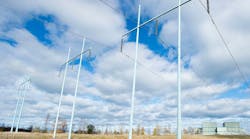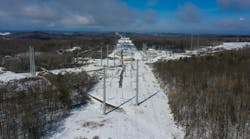The Eastern Wind Integration and Transmission Study (EWITS) is the culmination of an effort that spanned two and one-half years. The study team began by modeling wind resources in a large part of the Eastern Interconnection and finished by conducting a detailed wind integration study and top-down transmission analysis. The study resulted in information that can be used to guide future work. A number of other studies have already examined similar wind integration issues, but the breadth and depth of the analysis in EWITS is unique. EWITS builds on the work of previous integration studies, which looked at considerably smaller geographic footprints, focused almost exclusively on wind integration, and did not include transmission. EWITS took the next step by expanding the study area and including conceptual transmission overlays.
Just a few years ago, 5% wind energy penetration was a lofty goal, and to some the idea of integrating 20% wind by 2024 might seem a bit optimistic. And yet, we know from the European experience—where some countries have already reached wind energy penetrations of 10% or higher in a short period of time—that change can occur rapidly and that planning for that change is critically important. Because building transmission capacity takes much longer than installing wind plants, there is a sense of urgency to studying transmission. It is already starting to limit wind growth in certain areas.
The goal of the EWITS team was not to further any specific agenda or regional vision of the future, but to be as objective as possible while conducting a technical study of future high-penetration wind scenarios. To help guide the EWITS work, the U.S. Department of Energy’s (DOE) National Renewable Energy Laboratory (NREL) convened a Technical Review Committee (TRC) composed of regional electric reliability council representatives, expert reviewers, transmission planners, utility administrators, and wind industry representatives. Over a period of 14 months while the study was in progress, the TRC held 6 full-day meetings along with numerous Webinars and conference calls to review study progress; comment on study inputs, methods, and assumptions; assist with collecting data; and review drafts of the study report.... (read more...)

